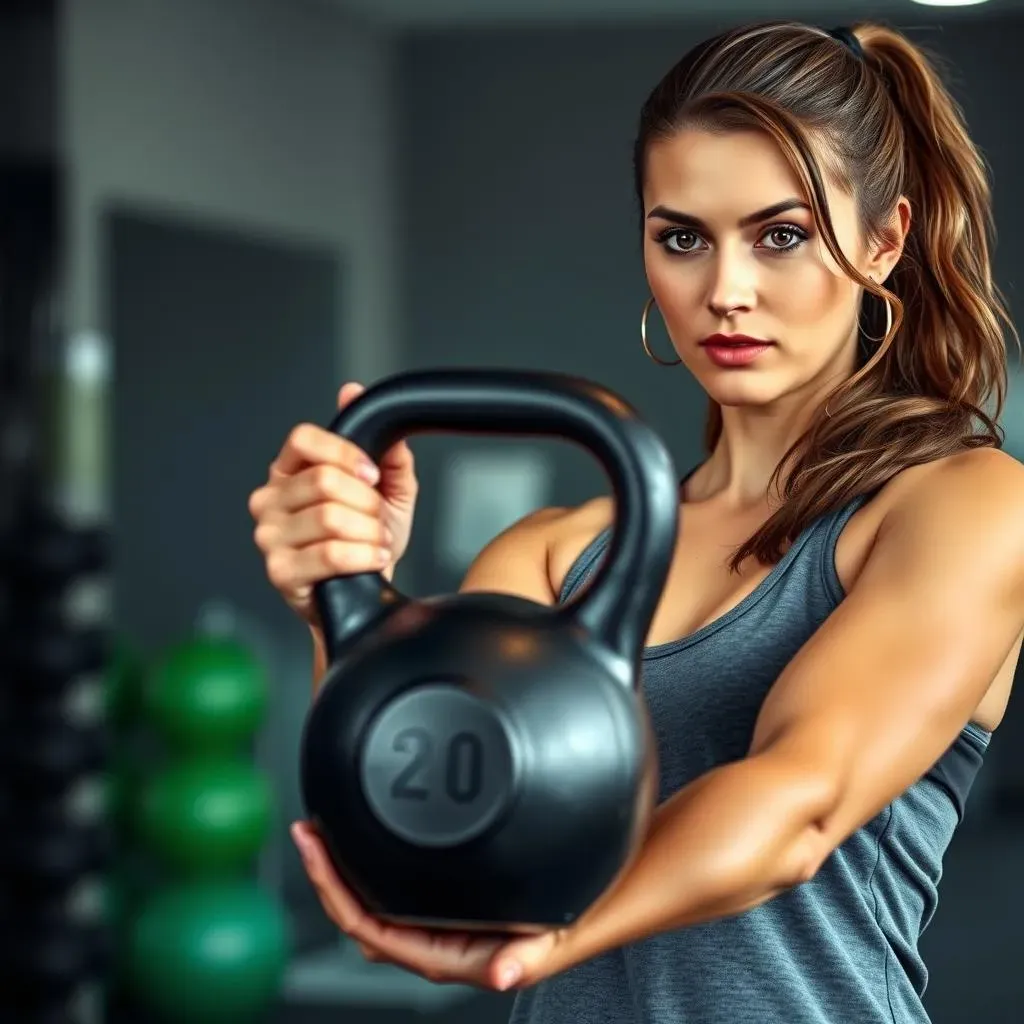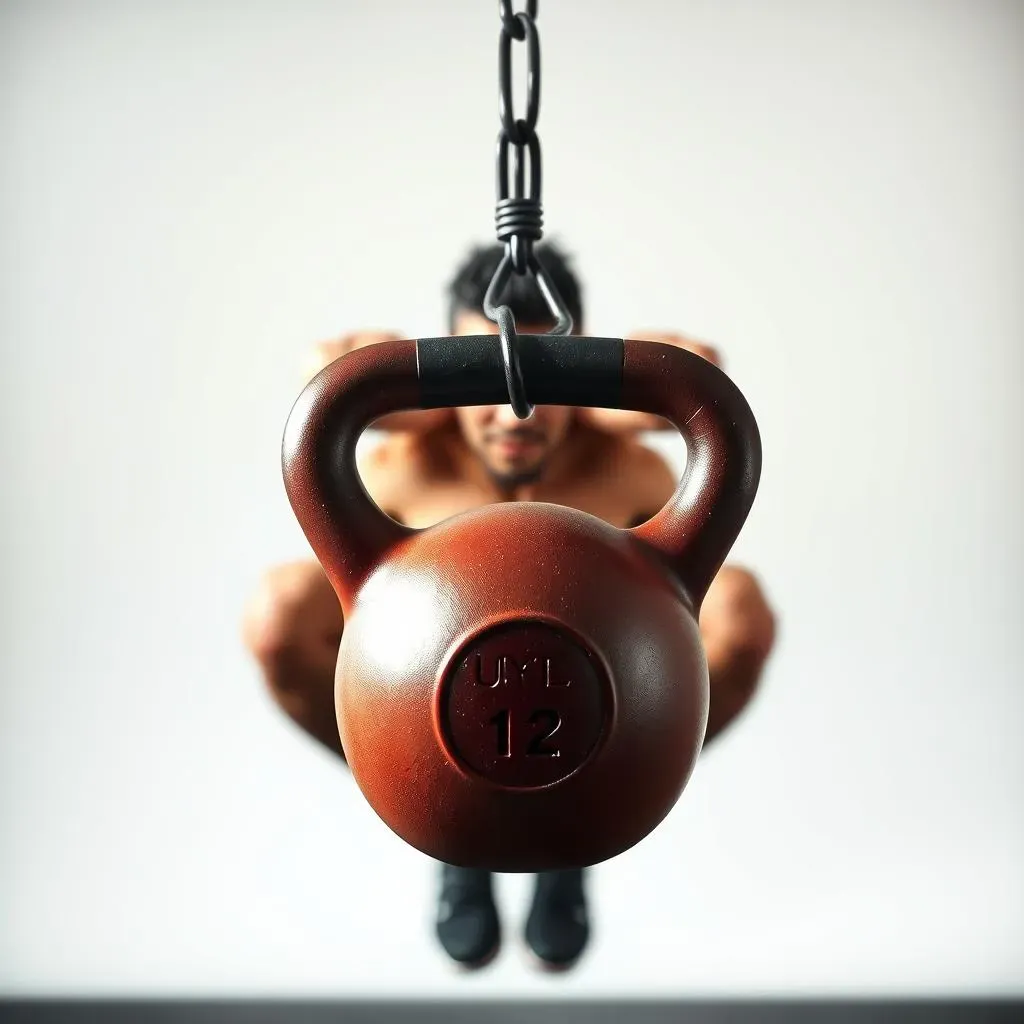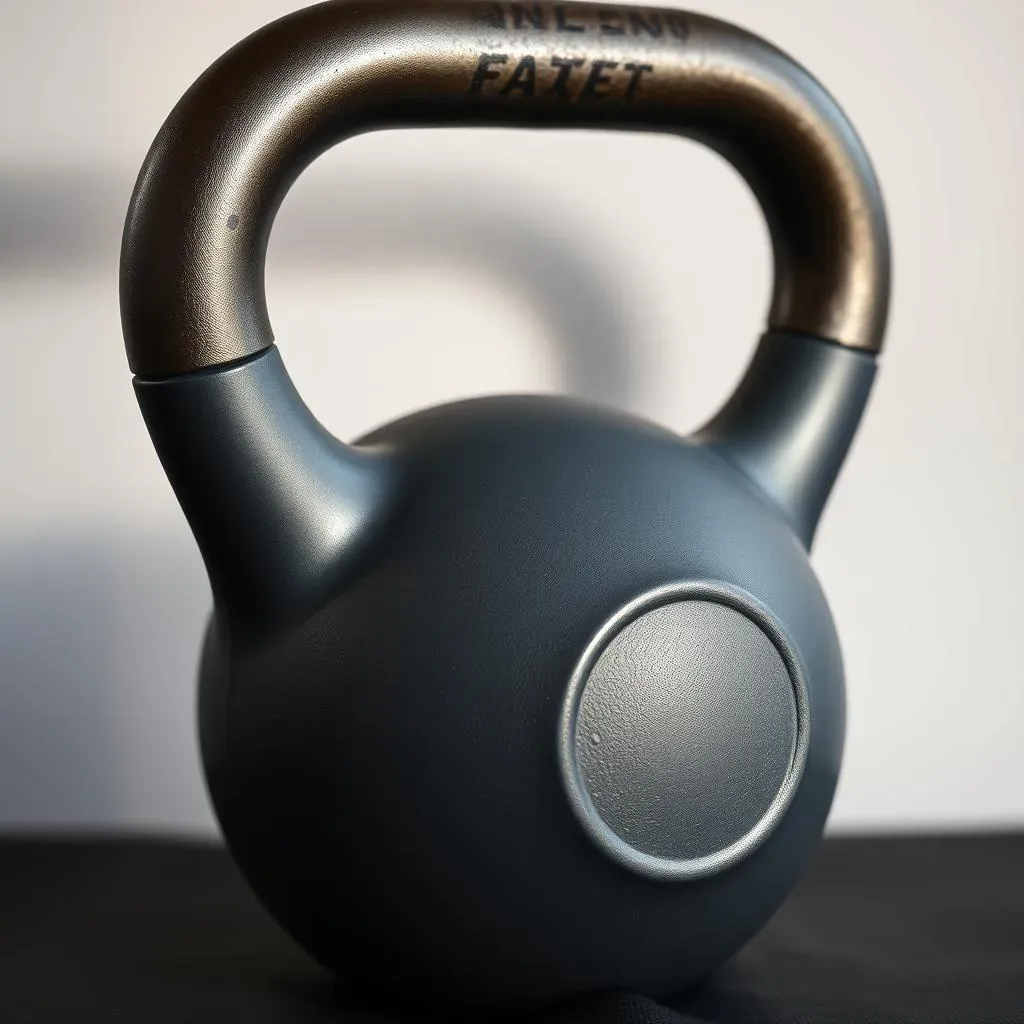Table of Contents
So, you're thinking about joining the kettlebell craze? Awesome! But before you start swinging like a pro, let's tackle a big question: what weight kettlebell should a female beginner use? It's a question that pops up all the time and I get it, walking into a gym and seeing all those cannonballs with handles can be intimidating. You might be tempted to grab the heaviest one to prove you can handle it, or the lightest one because you are afraid you'll hurt yourself. This article is going to help you skip the guesswork and get you started with the right weight for you. We'll also cover why technique is way more important than weight when you're just starting out and how to pick a kettlebell that feels like it was made just for you. No more wondering, let's get to it!
Finding Your Starting Point: What Weight Kettlebell Should a Female Beginner Use?

Finding Your Starting Point: What Weight Kettlebell Should a Female Beginner Use?
The Myth of "Too Heavy"
Okay, let’s get real. Many women walk up to a kettlebell and think, "No way, that's way too heavy!" It's like we've been conditioned to believe we're not as strong as we actually are. I’ve seen it a bunch of times, someone will pick up a small bell and then say it's too heavy, but they are doing it wrong, and the weight is not the problem. The truth is, most women are way stronger than they give themselves credit for. So, before you reach for the tiny three-pounder, let's talk about what's *actually* a good starting point.
Generally, for a female beginner, a good starting kettlebell weight is between 15 and 20 pounds (about 8 to 10 kilograms). Now, I know what you're thinking, "That sounds like a lot!" But trust me, it's not about how much you can lift right away. It’s more about learning the right moves, building a solid base of strength, and getting comfortable with the kettlebell. It's like learning to ride a bike; you don’t start on a unicycle, right?
Beginner Level | Starting Weight | Why this weight? |
|---|---|---|
Female Beginner with no weight training experience | 8-10 kg (15-20lbs) | Good starting point to learn form without compromising technique |
Female Beginner with some weight training experience | 12 kg (25lbs) | Can handle a bit more weight while still focusing on form |
Why Not Start Lighter?
You might be thinking, "Why not start with a super light weight, like 5 or 10 pounds?" Well, you *can*, but there's a catch. If the weight is too light, it can actually make it harder to learn proper technique. Think about it: a light weight can be harder to control, it’s like trying to steer a toy car that has no weight. A slightly heavier kettlebell will give you more feedback as you move, helping you understand how your body should be working. You'll be able to feel the momentum, and that's crucial for those big, powerful kettlebell movements.
Also, starting too light might mean you don't challenge yourself enough. You want to feel like you’re actually doing something, right? It's like reading a book that's way too easy: you might finish it, but you won't really grow from the experience. The goal is to find a weight that feels challenging but not overwhelming, something that makes you work without making you feel like you are going to collapse. It’s about finding that sweet spot where you’re learning and growing.
Why Technique Trumps Weight When Starting Out

Why Technique Trumps Weight When Starting Out
The Power of Perfect Form
Alright, so you've got your kettlebell, and you're ready to go. Hold up! Before you start swinging it around like a wild thing, let's talk about form. Why is it such a big deal? Well, think of your body as a machine. If you're using the wrong parts, you're going to wear it out and eventually something is gonna break. Proper technique isn't just about looking good; it's about keeping you safe and getting the most out of every rep. When you nail the form, you’re engaging the right muscles, protecting your joints, and building strength that will actually stick around. It’s like building a house, you need a solid foundation first before putting on the roof.
I see people all the time in the gym, they are trying to lift the heaviest weight without knowing how to even do a proper squat, it's like they are asking for an injury. When you focus on technique first, you learn how to control the kettlebell, how to engage your core, and how to use your legs to drive the movement. This translates to more power and more efficient exercises. It's like learning to play a musical instrument; you wouldn't start with a complex symphony, right? You start with the basics, master them, and then move on to the fancy stuff. Same goes for kettlebells.
Safety First, Gains Second
Let's be honest, nobody wants to get hurt. Lifting too heavy, too soon, is a one-way ticket to injury town. And trust me, that's a place you don't want to visit. When you're starting out, your muscles and joints aren't used to the movements, and adding too much weight can put a lot of stress on them. This can lead to strains, sprains, and all sorts of other ouchies. Focusing on technique, on the other hand, is your best defense against injury. When you perform exercises correctly, you’re not only building strength but also teaching your body how to move safely. It’s like putting on your seatbelt before you drive, it's a basic safety measure that can save you from a lot of trouble.
Plus, if you start with a weight that’s too heavy, you will probably end up compensating with bad form. You might be using your back instead of your legs, or you might be swinging the kettlebell with your arms instead of your hips. All of that is a recipe for disaster. It's like trying to force a puzzle piece that doesn't fit; you might get it in, but you'll end up bending and breaking things in the process. So, before you even think about increasing the weight, make sure you can do all the exercises with perfect form. Your body will thank you for it.
Technique Focus | Benefit | Potential Risk if Ignored |
|---|---|---|
Proper Squat Form | Engages glutes and legs, protects lower back | Knee or back injuries, inefficient movement |
Core Engagement | Stabilizes spine, enhances power | Lower back pain, poor balance |
Controlled Movements | Reduces momentum-based lifting, increases muscle activation | Joint stress, muscle strains |
How to Choose the Right Kettlebell for You

How to Choose the Right Kettlebell for You
The Feel of the Handle
Okay, so you know what weight to start with, but how do you actually pick a good kettlebell? It's not just about the weight; it's about how the kettlebell feels in your hands. The handle is super important. You want something that's smooth and comfortable, not something that's going to tear up your hands. I've seen some kettlebells with really rough handles that are just a pain to use. You don't want to be thinking about how much your hands hurt during your workout, right? You should be focusing on your form and your muscles, not on the blisters forming on your palms.
Look for a kettlebell with a handle that's wide enough for you to comfortably grip it with both hands, if needed, but also not so wide that you lose control. It should have a smooth, slightly textured surface. Some kettlebells have a powder coating, which is great because it gives you a good grip without being too rough. Avoid any kettlebells with handles that have sharp edges or seams, that will be a bad experience. It's like trying to hold onto a slippery bar of soap, it's just not going to work well. You need something that feels secure and lets you focus on your workout.
The Shape and Coating
Beyond the handle, the shape of the kettlebell and its coating also matter. You want a kettlebell that has a nice, round shape, not something that's oddly shaped or unbalanced. This makes it easier to control and move through different exercises. Also, pay attention to the "window," that's the space between the handle and the bell. You want it to be wide enough so that the kettlebell can rest comfortably on your forearm, especially when you're doing things like cleans and snatches. A small window can be really uncomfortable and can make those moves a lot more difficult than they need to be.
And let's talk about that coating. I mentioned powder coating before, and it's definitely my favorite. It gives you a good grip, it doesn't get too slippery when you sweat, and it's pretty durable. Some kettlebells have a glossy finish, which might look nice, but can be a pain when you are trying to get a good grip. And some are just made of raw metal, which can rust and feel terrible. The coating is like the tires on your car, it's what connects you to the road, or in this case, to the kettlebell. A good coating will make your workout smoother and safer.
Feature | What to Look For | Why It Matters |
|---|---|---|
Handle | Smooth, wide enough, slightly textured | Comfortable grip, prevents blisters |
Window | Wide enough for forearm rest | Comfort during cleans and snatches |
Coating | Powder coating | Good grip, durable |